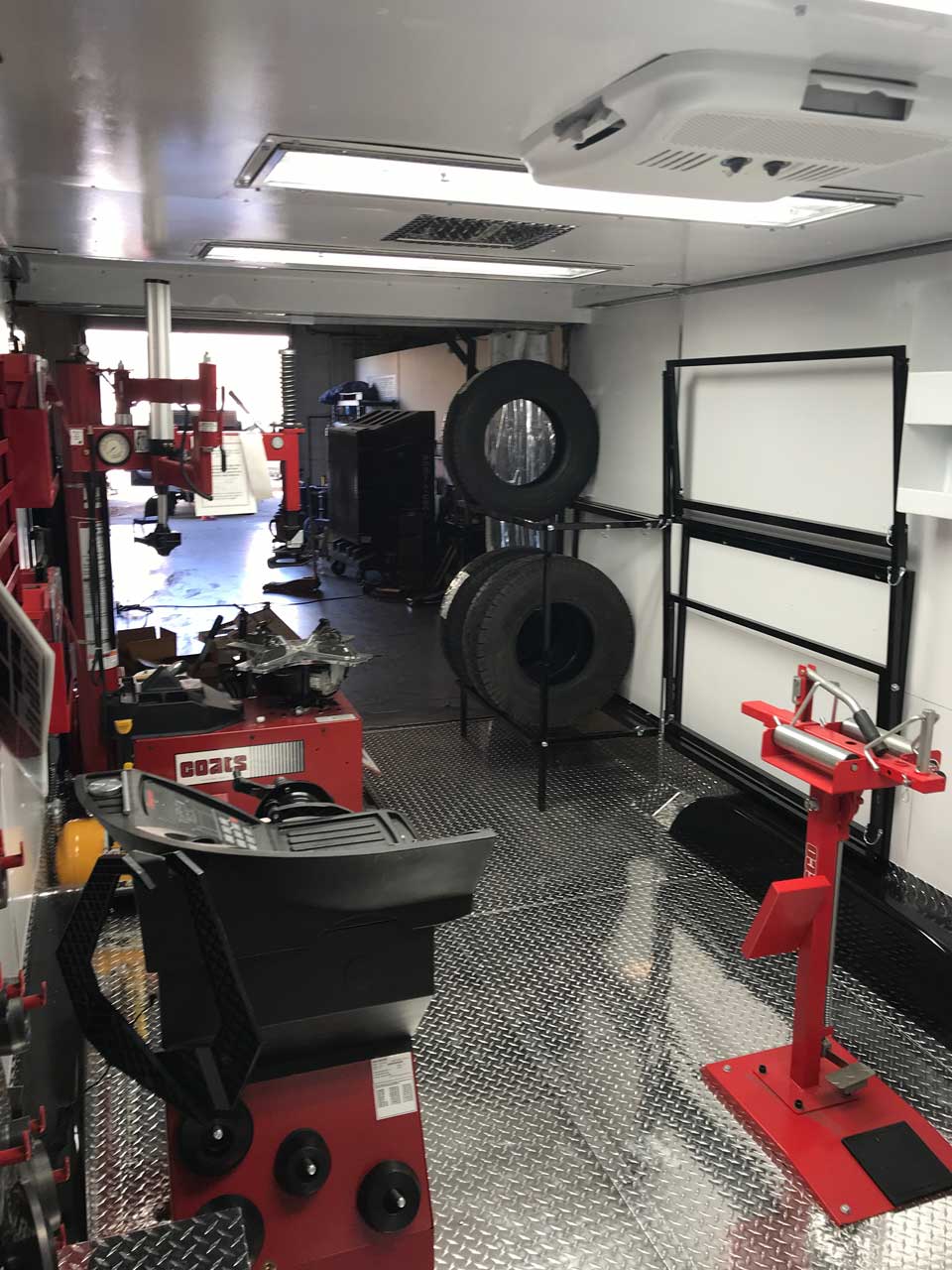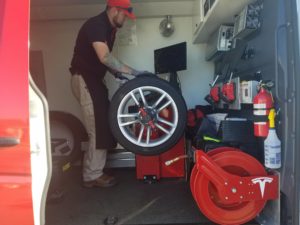Tire Service: Proven Approaches for Optimal Tire Upkeep and Care
Maintaining optimal tire condition is paramount for both safety and security and efficiency of any type of lorry. From making certain appropriate tire pressure to regular turning and positioning, there are proven approaches that can significantly expand the life expectancy of your tires and boost general driving experience. As we explore the ins and outs of tire treatment and maintenance, we will certainly discover important guidelines that every lorry owner should abide by for the very best possible outcomes. Let's explore the world of tire service and uncover the secrets to keeping your tires in top-notch shape for the lengthy haul.
Importance of Tire Pressure
Sufficient tire pressure advertises much better fuel effectiveness, as under-inflated tires can lead to enhanced rolling resistance, creating the engine to work tougher and take in even more fuel. Correct tire pressure makes sure even walk wear, enhancing tire long life and conserving cash in the lengthy run by delaying the need for early substitutes. Consistently changing and examining tire pressure, especially previously long trips, is an easy yet effective way to boost vehicle efficiency, expand tire life-span, and prioritize security on the road.
Tire Turning Standards
When considering tire rotation guidelines, it is necessary to recognize the relevance of this upkeep job in making the most of tire lifespan and keeping optimum vehicle efficiency. Tire turning includes changing the position of each tire on a lorry to ensure also walk wear. Front tires often tend to put on quicker than rear tires due to guiding pressures, making routine rotation essential for well balanced wear patterns. The advised rotation pattern varies depending upon whether an automobile is front-wheel, rear-wheel, all-wheel, or 4x4. Normally, tires should be rotated every 5,000 to 7,500 miles, or as advised in the automobile guidebook. Disregarding tire turning can lead to uneven wear, impacting handling, grip, and potentially compromising car safety. By sticking to proper rotation standards, vehicle drivers can extend the life of their tires, boost fuel effectiveness, and boost overall driving experience. Normal turning is an easy yet reliable upkeep technique that adds considerably to tire longevity and car performance.

Benefits of Wheel Alignment
Ensuring proper wheel placement after tire rotation is vital for keeping well balanced wear patterns and making the most of automobile efficiency. Wheel positioning describes the change of the angles go to these guys of the wheels to the manufacturer's requirements. One of the key benefits of wheel placement is boosted handling and guiding reaction. When the wheels are effectively straightened, it decreases steering initiative, ensuring a smoother and more regulated driving experience. In addition, proper wheel positioning helps to prolong the lifespan of your tires. Misaligned wheels can trigger irregular tire wear, causing premature tire substitute and raised upkeep prices.

Tire Footstep Depth Check
Doing a routine inspection of tire step depth is crucial for maintaining secure driving conditions and extending the life expectancy of your tires. Uneven walk wear can show Recommended Reading concerns with tire suspension, alignment, or stress, highlighting the importance of routine walk depth checks. By incorporating tire tread deepness checks right into your regular maintenance schedule, you can drive with self-confidence recognizing that your tires are in top condition.
Seasonal Tire Inspection
A comprehensive analysis of tire problem customized to certain weather condition problems is important for maintaining optimal efficiency and safety throughout the year. Seasonal tire inspection is an essential facet of tire upkeep that makes certain tires are prepared to face the obstacles postured by different weather condition conditions. To prepare for winter months, it is vital to inspect the tire stress on official website a regular basis as cold temperatures can trigger tire pressure to go down. Evaluating tire step depth is likewise important to make certain sufficient traction on snow and ice-covered roads. Furthermore, looking for signs of damage, such as lumps or splits, can aid prevent possible tire failures. As the periods change, it is essential to assess tire condition and make any kind of needed adjustments to guarantee secure driving. By performing regular seasonal tire examinations, vehicle drivers can lengthen tire life expectancy, improve fuel performance, and most significantly, ensure a safe and secure driving experience in varying climate conditions - Flat Tire Repair Las Vegas.
Conclusion
Finally, keeping proper tire pressure, turning tires routinely, lining up wheels properly, keeping track of step depth, and carrying out seasonal assessments are essential practices for ideal tire treatment. By complying with these verified methods, vehicle drivers can guarantee their tires last longer, execute better, and add to overall automobile safety. It is very important to prioritize tire maintenance to avoid mishaps, enhance fuel effectiveness, and prolong the life expectancy of tires.
Sufficient tire stress promotes much better fuel efficiency, as under-inflated tires can lead to raised rolling resistance, causing the engine to work harder and take in more fuel.When considering tire turning guidelines, it is vital to comprehend the significance of this maintenance job in making best use of tire lifespan and keeping optimum car efficiency. Seasonal tire examination is a basic facet of tire maintenance that ensures tires are ready to encounter the obstacles postured by various climate conditions. By carrying out regular seasonal tire examinations, vehicle drivers can extend tire life expectancy, boost gas effectiveness, and most notably, make certain a protected driving experience in varying climate problems.
In verdict, preserving correct tire stress, rotating tires frequently, straightening wheels correctly, monitoring tread depth, and carrying out seasonal examinations are essential techniques for ideal tire treatment.